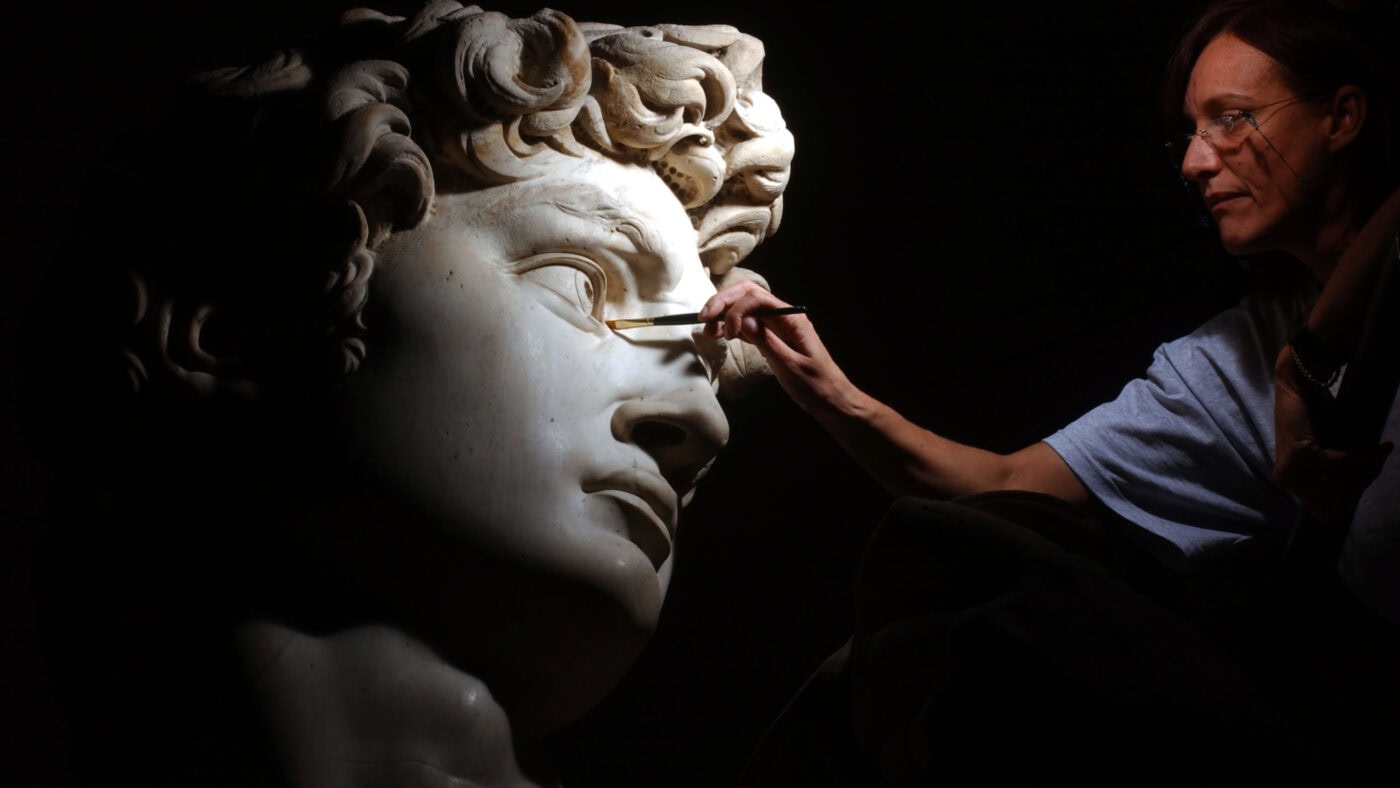Michelangelo was a prodigy and a late bloomer. As befits the greatest genius of his or perhaps any age, his talents blossomed early and late. In his twenties he was a renowned sculptor; in middle age he became a major painter; and just at the point when he wanted to retire, the Pope insisted that he become an architect. And so he built St Peter’s basilica in Rome.
The new Michelangelo exhibition at the British Museum focuses on this late period, starting with Michelangelo’s frustrated retirement and moving us through ‘The Last Judgement’, some of his religious work, the designs of St Peter’s and his late drawings. It’s a splendid exhibition with many stunning examples of Michelangelo’s techniques, though I certainly benefited from going in with good background knowledge. (To anyone who is interested, I recommend the exceptional book ‘Michelangelo: God’s Architect’ by William Wallace.)
The timing for this exhibition is perfect. Late bloomers are more and more visible in modern culture: older actresses are winning Oscars; the average age of the workforce has crept upwards with more and more people over sixty staying in work; and creative people like Jerry Seinfeld are continuing to prosper. Even Taylor Swift can be counted as a late bloomer based on the patterns of her most successful records, which came after more than a decade in the industry, much later than comparable performers. It’s true that she released her first album aged sixteen, but while the Beatles achieved all their number one hits in seven years, Swift’s first seven years saw her win just three of her current twelve number one hits.
And on every wall, the British Museum has emphasised the core of Michelangelo’s accomplishment: relentless drawing. As I discuss in my new book about late blooming talent, ‘Second Act’, paper was newly available to architects at this time, which is one reason why far more of Michelangelo’s drawings survive than for previous architects. This incessant drawing enabled him to learn architecture later in life: working from a codex he drew and redrew the architectural features until he had internalised their shapes and structures. Then with his artist’s mind he was able to reimagine those patterns, turning the classic model into the baroque style.
Michelangelo, though, had not wanted to be an architect. It happened like this. Antonio Sangalla, Pope Paul III’s favourite architect, died in 1546, leaving a number of incomplete works behind. He had built part of the wall meant to fortify Rome, a city that is impossible to defend as it requires a twelve-mile circuit of walls on difficult terrain. Sangalla completed one section at vast expense. So Paul III re-focused him on an area of Rome especially important to the papacy. Sangalla designed a massive, highly ornamental gate. It was only two-thirds complete when Sangalla died and remains incomplete today. Sangalla had also been working on St Peter’s, the most important church in Christendom. When the Pope had to replace him there were several architects he could have chosen. Instead he picked Michelangelo, a self-taught architect, with no completed buildings extant. Michelangelo didn’t want the job. But you cannot refuse a Pope.
The reasons Michelangelo didn’t want to inherit St Peter’s are simple. It was a mess. William Wallace said that the building site Michelangelo took on ‘looked much more like a Roman ruin’. Sangalla had inherited the project from another architect, who inherited it from another architect, and so on. Since Bramante made his original design, six other architects had worked on St Peter’s. Forty years of work had been done and the church was incomplete. And as Michelangelo saw it, it was wrong. The dome that was being planned would be too big to be supported by the base, which had been constantly altered by the succession of architects.
The Pope picked Michelangelo from sheer inspiration. Professional architects had been getting St Peter’s wrong. It needed an artist and an innovator. No matter that Michelangelo was a decade older than the man who had just died. No matter that he was already busy with Paul III’s chapel. No matter that he professed not to be an architect. No matter that he had lost out to Sangalla to build the wall of Rome. No matter that his other major architectural projects, like the facade of San Lorenzo in Florence, had been cancelled, or that the Medici Chapel was unfinished. He was the only artist with the right vision and determination for this project.
This brings us to Michelangelo’s final achievement, which is sadly missing from the exhibition: his genius for management. Even though the structure Michelangelo inherited was inadequate, the workers involved in the project did not accept him as their architect. So bad was this building that cracks were visible in the vaults. Michelangelo’s changes were accepted for that. But when he wanted to remove Sangalla’s exterior ambulatory, he was resisted. His reasons were sound. It blocked the light. And it would not be strong enough to support the dome. But he was a new man criticising the workers’ efforts. And asking them to reverse twenty years of labour. Michelangelo had to win them over. He did this through an intense display of expertise and micro-management of the building work to show his workers that he was the expert they needed.
He invented a scaffolding system so that donkeys could carry food and water to workers toiling high up on the walls. When he saw a man struggling to carve something correctly, he took the chisel and demonstrated himself. He was on site, every day, checking materials, helping to find good quality rope (a significant challenge, and on a worksite where large blocks are hoisted high, an important one). He talked people through the plans. Day by day, bit by bit, detail by detail, he won their trust and he raised a cathedral.
True genius does what it takes to succeed, which is why Michelangelo, old, tired, irritated at not being able to go home to Florence, went to a building site in Rome every day and talked to people who hated him about hauling stone and carving pillars. As well as everything else, Michelangelo turned out to be a late bloomer in the art of running a construction site. Everyone who loves architecture can still feel glad about that today.
Click here to subscribe to our daily briefing – the best pieces from CapX and across the web.
CapX depends on the generosity of its readers. If you value what we do, please consider making a donation.


